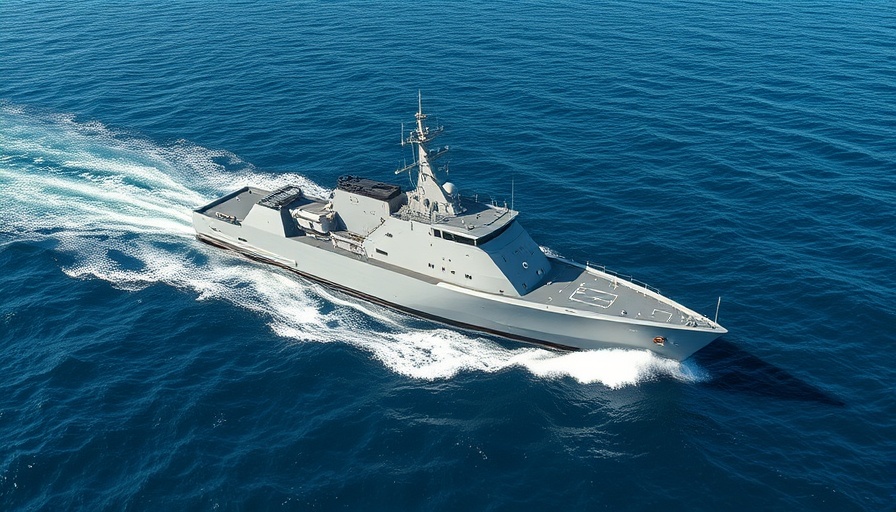
The UK MoD Expands Oversight for Future Naval Support
The UK Ministry of Defence (MoD) has recently revealed plans to appoint three key roles at Navantia's shipyard in Cadiz, Spain, crucial for the construction of Fleet Solid Support (FSS) vessels destined for the Royal Fleet Auxiliary. This initiative is part of a broader strategy to bolster the UK’s naval logistics capabilities, particularly as the nation transitions into a new era of maritime defense.
Importance of the Fleet Solid Support Vessels
The FSS vessels play a pivotal role in maritime operations, serving as support tankers and stores support ships. This is particularly significant as the current fleet solid support vessel, RFA Fort Victoria, is set to be retired by 2028. In preparation, the UK MoD has specified that the aft sections of the new FSS ships will be built in Spain, while the assembly and commissioning will take place in Belfast. According to the program timeline, construction is scheduled to commence at the end of 2025, with full operational capacity projected for 2031.
Roles with a Range of Responsibilities
The positions being advertised include a Constructive Engineering Lead, a Naval Architecture Lead, and a Marine Engineering Oversight Lead, with salaries ranging from £49,700 to £64,200. These roles reflect the MoD’s commitment to ensuring that these vessels meet top standards in quality and design. Enhancing workplace conditions in such projects often leads to attracting a skilled workforce willing to take ownership of complex engineering tasks, particularly in environments like shipbuilding.
Challenges Ahead: Balancing Objectives with Design Compromises
Potential hires will face the daunting challenge of managing trade-offs and design compromises, ensuring systems work cohesively. This rigorous oversight is essential for maintaining the efficiency and effectiveness of the vessels as they transition from blueprints to operational maritime assets. The multifaceted nature of their responsibilities underscores the importance of sound decision-making in defense projects.
The Bigger Picture: The UK's Naval Strategy
UK’s naval strategy is heavily reliant not only on building new vessels but also on ensuring that existing fleets such as the RFA Fort Victoria remain operational through refurbishments. With more than £20 million already spent in upkeep, the aim was to extend the lifespan of the vessel, which has now been laid up amidst concerns about its operational capability. The financial implications of maintaining fleet capacity while developing new vessels are a key area of focus for the MoD.
Local vs Global Perspectives
This initiative highlights the interconnectedness of global shipbuilding industries and reflects broader trends in defense collaborations. As the UK strengthens its military logistics through partnerships with Spanish shipyards, it raises questions about whether these international collaborations will become a norm in future defense strategies. Mississippi, known for its shipbuilding industry, can learn from this model as it continues to develop its naval capabilities.
Conclusion and Call to Action
As the UK MoD gears up for significant changes in its naval support capabilities, it is crucial for stakeholders—especially in maritime industries like those in Mississippi—to pay attention to potential opportunities for collaboration and employment. Embrace the forthcoming changes in the shipbuilding landscape, and consider how localities may adapt to or benefit from these shifts in maritime strategy.
 Add Row
Add Row  Add
Add 




Write A Comment